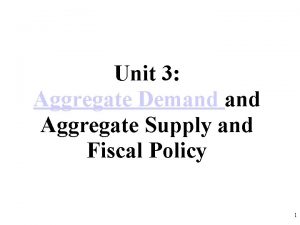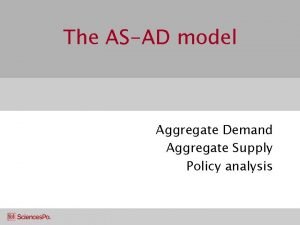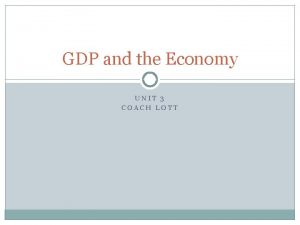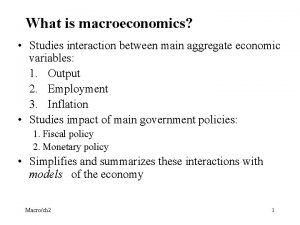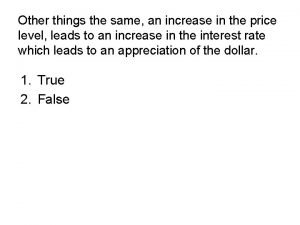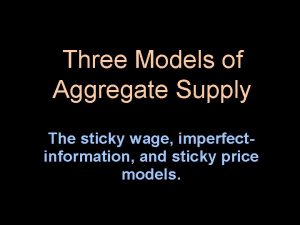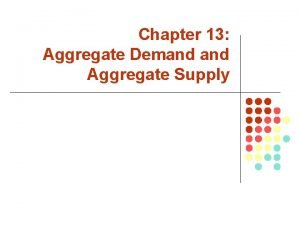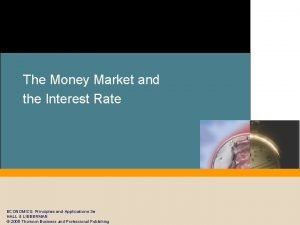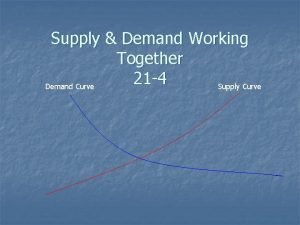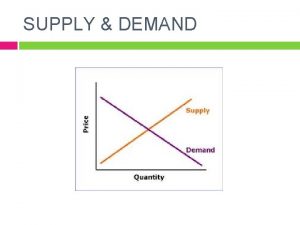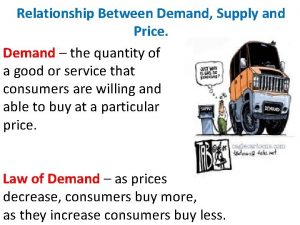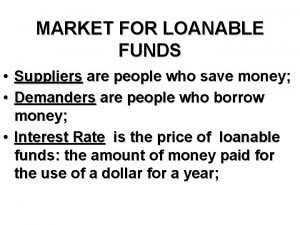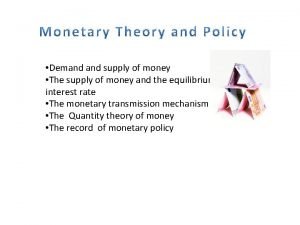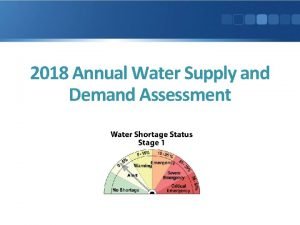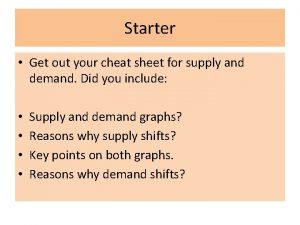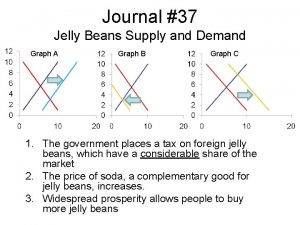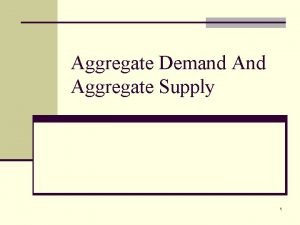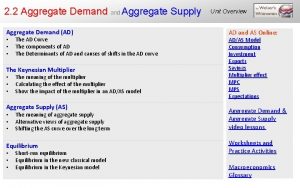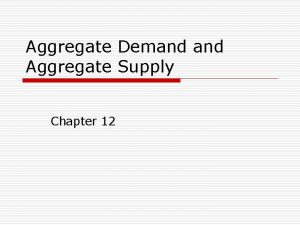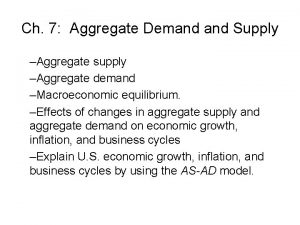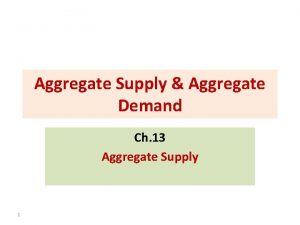33 Aggregate Demand Aggregate Supply Power Point Slides







































































- Slides: 71

33 Aggregate Demand Aggregate Supply Power. Point Slides prepared by: Andreea CHIRITESCU Eastern Illinois University © 2015 Cengage Learning. All Rights Reserved. May not be copied, scanned, or duplicated, in whole or in part, except for use as permitted in a license distributed with a certain product or service or otherwise on a password-protected website for classroom use. 1

Economic Fluctuations • Economic activity – Fluctuates from year to year • Recession – Economic contraction – Period of declining real incomes and rising unemployment • Depression – Severe recession “You’re fired. Pass it on. ” © 2015 Cengage Learning. All Rights Reserved. May not be copied, scanned, or duplicated, in whole or in part, except for use as permitted in a license distributed with a certain product or service or otherwise on a password-protected website for classroom use. 2

Economic Fluctuations • Three key facts about economic fluctuations 1. Economic fluctuations are irregular and unpredictable • The business cycle 2. Most macroeconomic quantities fluctuate together • Recessions: economy-wide phenomena 3. As output falls, unemployment rises © 2015 Cengage Learning. All Rights Reserved. May not be copied, scanned, or duplicated, in whole or in part, except for use as permitted in a license distributed with a certain product or service or otherwise on a password-protected website for classroom use. 3

Figure 1 A Look at Short-Run Economic Fluctuations (a) This figure shows real GDP in panel (a), investment spending in panel (b), and unemployment in panel (c) for the U. S. economy using quarterly data since 1965. Recessions are shown as the shaded areas. Notice that real GDP and investment spending decline during recessions, while unemployment rises. © 2015 Cengage Learning. All Rights Reserved. May not be copied, scanned, or duplicated, in whole or in part, except for use as permitted in a license distributed with a certain product or service or otherwise on a password-protected website for classroom use. 4

Figure 1 A Look at Short-Run Economic Fluctuations (b) This figure shows real GDP in panel (a), investment spending in panel (b), and unemployment in panel (c) for the U. S. economy using quarterly data since 1965. Recessions are shown as the shaded areas. Notice that real GDP and investment spending decline during recessions, while unemployment rises. © 2015 Cengage Learning. All Rights Reserved. May not be copied, scanned, or duplicated, in whole or in part, except for use as permitted in a license distributed with a certain product or service or otherwise on a password-protected website for classroom use. 5

Figure 1 A Look at Short-Run Economic Fluctuations (c) This figure shows real GDP in panel (a), investment spending in panel (b), and unemployment in panel (c) for the U. S. economy using quarterly data since 1965. Recessions are shown as the shaded areas. Notice that real GDP and investment spending decline during recessions, while unemployment rises. © 2015 Cengage Learning. All Rights Reserved. May not be copied, scanned, or duplicated, in whole or in part, except for use as permitted in a license distributed with a certain product or service or otherwise on a password-protected website for classroom use. 6

Short-Run Economic Fluctuations • Classical dichotomy – Separation of variables into: • Real variables • Nominal variables • Monetary neutrality – Changes in the money supply • Affect nominal variables • Do not affect real variables © 2015 Cengage Learning. All Rights Reserved. May not be copied, scanned, or duplicated, in whole or in part, except for use as permitted in a license distributed with a certain product or service or otherwise on a password-protected website for classroom use. 7

Short-Run Economic Fluctuations • Classical theory holds in the long-run – Changes in money supply • Affect prices, and other nominal variables • Do not affect real GDP, unemployment, or other real variables © 2015 Cengage Learning. All Rights Reserved. May not be copied, scanned, or duplicated, in whole or in part, except for use as permitted in a license distributed with a certain product or service or otherwise on a password-protected website for classroom use. 8

Short-Run Economic Fluctuations • Short-run – Assumption of monetary neutrality: no longer appropriate – Real and nominal variables are highly intertwined – Changes in the money supply • Can temporarily push real GDP away from its long-run trend © 2015 Cengage Learning. All Rights Reserved. May not be copied, scanned, or duplicated, in whole or in part, except for use as permitted in a license distributed with a certain product or service or otherwise on a password-protected website for classroom use. 9

Short-Run Economic Fluctuations • AD-AS model – Model of aggregate demand (AD) and aggregate supply (AS) – Most economists use it to explain shortrun fluctuations in economic activity • Around its long-run trend © 2015 Cengage Learning. All Rights Reserved. May not be copied, scanned, or duplicated, in whole or in part, except for use as permitted in a license distributed with a certain product or service or otherwise on a password-protected website for classroom use. 10

Short-Run Economic Fluctuations • Aggregate-demand curve – Shows the quantity of goods and services – That households, firms, the government, and customers abroad – Want to buy at each price level – Downward sloping © 2015 Cengage Learning. All Rights Reserved. May not be copied, scanned, or duplicated, in whole or in part, except for use as permitted in a license distributed with a certain product or service or otherwise on a password-protected website for classroom use. 11

Short-Run Economic Fluctuations • Aggregate-supply curve – Shows the quantity of goods and services – That firms choose to produce and sell – At each price level – Upward sloping © 2015 Cengage Learning. All Rights Reserved. May not be copied, scanned, or duplicated, in whole or in part, except for use as permitted in a license distributed with a certain product or service or otherwise on a password-protected website for classroom use. 12

Figure 2 Aggregate Demand Aggregate Supply Price Level Aggregate supply Equilibrium price level Aggregate demand Equilibrium output Quantity of Output Economists use the model of aggregate demand aggregate supply to analyze economic fluctuations. On the vertical axis is the overall level of prices. On the horizontal axis is the economy’s total output of goods and services. Output and the price level adjust to the point at which the aggregate-supply and aggregate-demand curves intersect. © 2015 Cengage Learning. All Rights Reserved. May not be copied, scanned, or duplicated, in whole or in part, except for use as permitted in a license distributed with a certain product or service or otherwise on a password-protected website for classroom use. 13

The Aggregate-Demand Curve Y = C + I + G + NX • Three effects explain why AD curve slopes downward: – Wealth effect (C ) – Interest-rate effect (I) – Exchange-rate effect (NX) • Assumption: government spending (G) – Fixed by policy © 2015 Cengage Learning. All Rights Reserved. May not be copied, scanned, or duplicated, in whole or in part, except for use as permitted in a license distributed with a certain product or service or otherwise on a password-protected website for classroom use. 14

The Aggregate-Demand Curve • Price level and consumption (C): the wealth effect – Decrease in price level • Increase in the real value of money • Consumers are wealthier • Increase in consumer spending • Increase in quantity demanded of goods and services © 2015 Cengage Learning. All Rights Reserved. May not be copied, scanned, or duplicated, in whole or in part, except for use as permitted in a license distributed with a certain product or service or otherwise on a password-protected website for classroom use. 15

The Aggregate-Demand Curve • Price level and investment (I): the interestrate effect – Decrease in price level • Decrease in the interest rate • Increase spending on investment goods • Increase in quantity demanded of goods and services © 2015 Cengage Learning. All Rights Reserved. May not be copied, scanned, or duplicated, in whole or in part, except for use as permitted in a license distributed with a certain product or service or otherwise on a password-protected website for classroom use. 16

The Aggregate-Demand Curve • Price level and net exports (NX): the exchange-rate effect – Decrease in U. S. price level • Decrease in the interest rate • U. S. dollar depreciates • Stimulates U. S. net exports • Increase in quantity demanded of goods and services © 2015 Cengage Learning. All Rights Reserved. May not be copied, scanned, or duplicated, in whole or in part, except for use as permitted in a license distributed with a certain product or service or otherwise on a password-protected website for classroom use. 17

The Aggregate-Demand Curve • A fall in price level – Increases quantity of goods and services demanded – Because: 1. Consumers are wealthier: stimulates the demand for consumption goods 2. Interest rates fall: stimulates the demand for investment goods 3. Currency depreciates: stimulates the demand for net exports © 2015 Cengage Learning. All Rights Reserved. May not be copied, scanned, or duplicated, in whole or in part, except for use as permitted in a license distributed with a certain product or service or otherwise on a password-protected website for classroom use. 18

The Aggregate-Demand Curve • A rise in price level – Decreases the quantity of goods and services demanded – Because: 1. Consumers are poorer: depress consumer spending 2. Higher interest rates fall: depress investment spending 3. Currency appreciates: depress net exports © 2015 Cengage Learning. All Rights Reserved. May not be copied, scanned, or duplicated, in whole or in part, except for use as permitted in a license distributed with a certain product or service or otherwise on a password-protected website for classroom use. 19

Figure 3 The Aggregate-Demand Curve Price Level 1. A decrease in the price level. . . P 1 2. . increases the quantity of goods and services demanded P 2 Aggregate demand Y 1 Y 2 Quantity of Output A fall in the price level from P 1 to P 2 increases the quantity of goods and services demanded from Y 1 to Y 2. There are three reasons for this negative relationship. As the price level falls, real wealth rises, interest rates fall, and the exchange rate depreciates. These effects stimulate spending on consumption, investment, and net exports. Increased spending on any or all of these components of output means a larger quantity of goods and services demanded. © 2015 Cengage Learning. All Rights Reserved. May not be copied, scanned, or duplicated, in whole or in part, except for use as permitted in a license distributed with a certain product or service or otherwise on a password-protected website for classroom use. 20

The Aggregate-Demand Curve • The AD curve might shift: – Changes in consumption, C – Changes in investment, I – Changes in government purchases, G – Changes in net exports, NX © 2015 Cengage Learning. All Rights Reserved. May not be copied, scanned, or duplicated, in whole or in part, except for use as permitted in a license distributed with a certain product or service or otherwise on a password-protected website for classroom use. 21

The Aggregate-Demand Curve • Changes in consumption, C – Events that change how much people want to consume at a given price level • Changes in taxes, wealth – Increase in consumer spending • Aggregate-demand curve: shift right © 2015 Cengage Learning. All Rights Reserved. May not be copied, scanned, or duplicated, in whole or in part, except for use as permitted in a license distributed with a certain product or service or otherwise on a password-protected website for classroom use. 22

The Aggregate-Demand Curve • Changes in investment, I – Events that change how much firms want to invest at a given price level • Better technology • Tax policy • Money supply – Increase in investment • Aggregate-demand curve: shift right © 2015 Cengage Learning. All Rights Reserved. May not be copied, scanned, or duplicated, in whole or in part, except for use as permitted in a license distributed with a certain product or service or otherwise on a password-protected website for classroom use. 23

The Aggregate-Demand Curve • Changes in government purchases, G – Policy makers – change government spending at a given price level • Build new roads – Increase in government purchases • Aggregate-demand curve: shift right © 2015 Cengage Learning. All Rights Reserved. May not be copied, scanned, or duplicated, in whole or in part, except for use as permitted in a license distributed with a certain product or service or otherwise on a password-protected website for classroom use. 24

The Aggregate-Demand Curve • Changes in net exports, NX – Events that change net exports for a given price level • Recession in Europe • International speculators – change in exchange rate – Increase in net exports • Aggregate-demand curve: shift right © 2015 Cengage Learning. All Rights Reserved. May not be copied, scanned, or duplicated, in whole or in part, except for use as permitted in a license distributed with a certain product or service or otherwise on a password-protected website for classroom use. 25

Table 1 The Aggregate-Demand Curve: Summary © 2015 Cengage Learning. All Rights Reserved. May not be copied, scanned, or duplicated, in whole or in part, except for use as permitted in a license distributed with a certain product or service or otherwise on a password-protected website for classroom use. 26

Table 1 The Aggregate-Demand Curve: Summary © 2015 Cengage Learning. All Rights Reserved. May not be copied, scanned, or duplicated, in whole or in part, except for use as permitted in a license distributed with a certain product or service or otherwise on a password-protected website for classroom use. 27

The Aggregate-Supply Curve • Long run aggregate-supply curve, LRAS – Aggregate-supply curve is vertical • Price level does not affect the long-run determinants of GDP: – Supplies of labor, capital, and natural resources – Available technology • Short run – Aggregate-supply curve is upward sloping © 2015 Cengage Learning. All Rights Reserved. May not be copied, scanned, or duplicated, in whole or in part, except for use as permitted in a license distributed with a certain product or service or otherwise on a password-protected website for classroom use. 28

Figure 4 The Long-Run Aggregate-Supply Curve Price Level Long-run aggregate supply P 1 1. A change in the price level. . . P 2 2. . does not affect the quantity of goods and services supplied in the long run Natural level of output Quantity of Output In the long run, the quantity of output supplied depends on the economy’s quantities of labor, capital, and natural resources and on the technology for turning these inputs into output. Because the quantity supplied does not depend on the overall price level, the long-run aggregate-supply curve is vertical at the natural level of output. © 2015 Cengage Learning. All Rights Reserved. May not be copied, scanned, or duplicated, in whole or in part, except for use as permitted in a license distributed with a certain product or service or otherwise on a password-protected website for classroom use. 29

The Aggregate-Supply Curve • Natural level of output – Production of goods and services – That an economy achieves in the long run • When unemployment is at its normal rate – Potential output – Full-employment output © 2015 Cengage Learning. All Rights Reserved. May not be copied, scanned, or duplicated, in whole or in part, except for use as permitted in a license distributed with a certain product or service or otherwise on a password-protected website for classroom use. 30

The Aggregate-Supply Curve • The LRAS curve might shift – Any change in natural level of output – Changes in labor – Changes in capital – Changes in natural resources – Changes in technological knowledge © 2015 Cengage Learning. All Rights Reserved. May not be copied, scanned, or duplicated, in whole or in part, except for use as permitted in a license distributed with a certain product or service or otherwise on a password-protected website for classroom use. 31

The Aggregate-Supply Curve • Changes in labor – Quantity of labor – increases • Aggregate-supply curve: shifts right – Natural rate of unemployment – increases • Aggregate-supply curve: shifts left • Changes in capital – Capital stock – increase • Aggregate-supply curve: shifts right – Physical and human capital © 2015 Cengage Learning. All Rights Reserved. May not be copied, scanned, or duplicated, in whole or in part, except for use as permitted in a license distributed with a certain product or service or otherwise on a password-protected website for classroom use. 32

The Aggregate-Supply Curve • Changes in natural resources – New discovery of natural resource • Aggregate-supply curve: shifts right – Weather – Availability of natural resources © 2015 Cengage Learning. All Rights Reserved. May not be copied, scanned, or duplicated, in whole or in part, except for use as permitted in a license distributed with a certain product or service or otherwise on a password-protected website for classroom use. 33

The Aggregate-Supply Curve • Changes in technology – New technology, for given labor, capital and natural resources • Aggregate-supply curve: shifts right – International trade – Government regulation © 2015 Cengage Learning. All Rights Reserved. May not be copied, scanned, or duplicated, in whole or in part, except for use as permitted in a license distributed with a certain product or service or otherwise on a password-protected website for classroom use. 34

Long-Run Growth and Inflation • In long run: both AD and LRAS curve shift – Continual shifts of LRAS curve to right • Technological progress – AD curve shifts to right • Monetary policy • The Fed increases money supply over time – Result: • Continuing growth in output • Continuing inflation © 2015 Cengage Learning. All Rights Reserved. May not be copied, scanned, or duplicated, in whole or in part, except for use as permitted in a license distributed with a certain product or service or otherwise on a password-protected website for classroom use. 35

Figure 5 Long-Run Growth and Inflation in the Model of Aggregate Demand Aggregate Supply Price Level LRAS 1990 LRAS 2000 LRAS 2010 1. In the long run, technological progress shifts long-run aggregate supply… 2. . and growth in the money supply shifts aggregate demand. . . P 2010 3. . leading to growth in output. . . P 2000 P 1990 AD 2010 4. . and ongoing inflation AD 1990 Y 2000 AD 2000 Y 2010 Quantity of Output As the economy becomes better able to produce goods and services over time, primarily because of technological progress, the long-run aggregate-supply curve shifts to the right. At the same time, as the Fed increases the money supply, the aggregate-demand curve also shifts to the right. In this figure, output grows from Y 1990 to Y 2000 and then to Y 2010, and the price level rises from P 1990 to P 2000 and then to P 2010. Thus, the model of aggregate demand aggregate supply offers a new way to describe the classical analysis of growth and inflation. © 2015 Cengage Learning. All Rights Reserved. May not be copied, scanned, or duplicated, in whole or in part, except for use as permitted in a license distributed with a certain product or service or otherwise on a password-protected website for classroom use. 36

The Aggregate-Supply Curve • In the short-run: – Increase in overall level of prices in economy • Tends to raise the quantity of goods and services supplied – Decrease in level of prices • Tends to reduce quantity of goods and services supplied © 2015 Cengage Learning. All Rights Reserved. May not be copied, scanned, or duplicated, in whole or in part, except for use as permitted in a license distributed with a certain product or service or otherwise on a password-protected website for classroom use. 37

Figure 6 The Short-Run Aggregate-Supply Curve Price Level Short-run aggregate supply 1. A decrease in the price level. . . P 1 P 2 2. . reduces the quantity of goods and services supplied in the short run Y 2 Y 1 Quantity of Output In the short run, a fall in the price level from P 1 to P 2 reduces the quantity of output supplied from Y 1 to Y 2. This positive relationship could be due to sticky wages, sticky prices, or misperceptions. Over time, wages, prices, and perceptions adjust, so this positive relationship is only temporary. © 2015 Cengage Learning. All Rights Reserved. May not be copied, scanned, or duplicated, in whole or in part, except for use as permitted in a license distributed with a certain product or service or otherwise on a password-protected website for classroom use. 38

The Aggregate-Supply Curve • Theories that explain why the AS curve slopes upward in short-run: – Sticky-wage theory – Sticky-price theory – Misperceptions theory © 2015 Cengage Learning. All Rights Reserved. May not be copied, scanned, or duplicated, in whole or in part, except for use as permitted in a license distributed with a certain product or service or otherwise on a password-protected website for classroom use. 39

The Aggregate-Supply Curve • Sticky-wage theory – Nominal wages - slow to adjust to changing economic conditions • Long-term contracts: workers and firms • Slowly changing social norms • Notions of fairness - influence wage setting – Nominal wages - based on expected prices • Don’t respond immediately when actual price level – different from what was expected © 2015 Cengage Learning. All Rights Reserved. May not be copied, scanned, or duplicated, in whole or in part, except for use as permitted in a license distributed with a certain product or service or otherwise on a password-protected website for classroom use. 40

The Aggregate-Supply Curve • Sticky-wage theory – If price level < expected • Firms – incentive to produce less output – If price level > expected • Firms – incentive to produce more output © 2015 Cengage Learning. All Rights Reserved. May not be copied, scanned, or duplicated, in whole or in part, except for use as permitted in a license distributed with a certain product or service or otherwise on a password-protected website for classroom use. 41

The Aggregate-Supply Curve • Sticky-price theory – Prices of some goods and services • Slow to adjust to changing economic conditions • Menu costs – Costs to adjusting prices © 2015 Cengage Learning. All Rights Reserved. May not be copied, scanned, or duplicated, in whole or in part, except for use as permitted in a license distributed with a certain product or service or otherwise on a password-protected website for classroom use. 42

The Aggregate-Supply Curve • Misperceptions theory – Changes in the overall price level • Can temporarily mislead suppliers – About changes in individual markets – Changes in relative prices • Suppliers - respond to changes in level of prices – Change - quantity supplied of goods and services © 2015 Cengage Learning. All Rights Reserved. May not be copied, scanned, or duplicated, in whole or in part, except for use as permitted in a license distributed with a certain product or service or otherwise on a password-protected website for classroom use. 43

The Aggregate-Supply Curve • Quantity of output supplied = = Natural level of output + + a(Actual price level – Expected price level) • Where a - number that determines how much output responds to unexpected changes in the price level © 2015 Cengage Learning. All Rights Reserved. May not be copied, scanned, or duplicated, in whole or in part, except for use as permitted in a license distributed with a certain product or service or otherwise on a password-protected website for classroom use. 44

The Aggregate-Supply Curve • The short-run AS curve might shift: – Changes in labor, capital, natural resources, or technological knowledge – Expected price level increases • Aggregate-supply curve: shifts left © 2015 Cengage Learning. All Rights Reserved. May not be copied, scanned, or duplicated, in whole or in part, except for use as permitted in a license distributed with a certain product or service or otherwise on a password-protected website for classroom use. 45

Table 2 The Short-Run Aggregate-Supply Curve: Summary © 2015 Cengage Learning. All Rights Reserved. May not be copied, scanned, or duplicated, in whole or in part, except for use as permitted in a license distributed with a certain product or service or otherwise on a password-protected website for classroom use. 46

Table 2 The Short-Run Aggregate-Supply Curve: Summary © 2015 Cengage Learning. All Rights Reserved. May not be copied, scanned, or duplicated, in whole or in part, except for use as permitted in a license distributed with a certain product or service or otherwise on a password-protected website for classroom use. 47

Causes of Economic Fluctuations • Assumption – Economy begins in long-run equilibrium • Long-run equilibrium: – Intersection of AD and LRAS curves • Natural level of output • Actual price level – Intersection of AD and short-run AS curve • Expected price level = Actual price level © 2015 Cengage Learning. All Rights Reserved. May not be copied, scanned, or duplicated, in whole or in part, except for use as permitted in a license distributed with a certain product or service or otherwise on a password-protected website for classroom use. 48

Figure 7 The Long-Run Equilibrium Price Level Equilibrium price Long-run aggregate supply Short-run aggregate supply A Natural level of output Aggregate demand Quantity of Output The long-run equilibrium of the economy is found where the aggregate-demand curve crosses the long-run aggregate-supply curve (point A). When the economy reaches this long-run equilibrium, the expected price level will have adjusted to equal the actual price level. As a result, the short-run aggregate-supply curve crosses this point as well. © 2015 Cengage Learning. All Rights Reserved. May not be copied, scanned, or duplicated, in whole or in part, except for use as permitted in a license distributed with a certain product or service or otherwise on a password-protected website for classroom use. 49

Causes of Economic Fluctuations • Shift in aggregate demand – Wave of pessimism: AD shifts left – Short-run • Output falls • Price level falls – Long-run • Short-run aggregate-supply curve shifts right • Output – natural level • Price level – falls © 2015 Cengage Learning. All Rights Reserved. May not be copied, scanned, or duplicated, in whole or in part, except for use as permitted in a license distributed with a certain product or service or otherwise on a password-protected website for classroom use. 50

Table 3 Four Steps for Analyzing Macroeconomic Fluctuations 1. Decide whether the event shifts the aggregate-demand curve or the aggregate-supply curve (or perhaps both). 2. Decide the direction in which the curve shifts. 3. Use the diagram of aggregate demand aggregate supply to determine the impact on output and the price level in the short run. 4. Use the diagram of aggregate demand aggregate supply to analyze how the economy moves from its new short-run equilibrium to its long-run equilibrium. © 2015 Cengage Learning. All Rights Reserved. May not be copied, scanned, or duplicated, in whole or in part, except for use as permitted in a license distributed with a certain product or service or otherwise on a password-protected website for classroom use. 51

Figure 8 A Contraction in Aggregate Demand Price Level P 1 P 2 Long-run Short-run aggregate supply, AS 1 A B C P 3 AS 2 3. . but over time, the short-run aggregate-supply curve shifts. . . 4. . and output returns to its natural level. 1. A decrease in aggregate demand. . . AD 2 Y 2 Aggregate demand, AD 1 Y 1 Quantity of Output 2. . causes output to fall in the short run. . . A fall in aggregate demand is represented with a leftward shift in the aggregate-demand curve from AD 1 to AD 2. In the short run, the economy moves from point A to point B. Output falls from Y 1 to Y 2, and the price level falls from P 1 to P 2. Over time, as the expected price level adjusts, the short-run aggregate-supply curve shifts to the right from AS 1 to AS 2, and the economy reaches point C, where the new aggregate-demand curve crosses the long-run aggregate-supply curve. In the long run, the price level falls to P 3, and output returns to its natural level, Y 1. © 2015 Cengage Learning. All Rights Reserved. May not be copied, scanned, or duplicated, in whole or in part, except for use as permitted in a license distributed with a certain product or service or otherwise on a password-protected website for classroom use. 52

Two Big Shifts in Aggregate Demand: The Great Depression and World War II • Early 1930 s: large drop in real GDP – The Great Depression • Largest economic downturn in U. S. history – From 1929 to 1933 • Real GDP fell by 27% • Unemployment rose from 3 to 25% • Price level fell by 22% © 2015 Cengage Learning. All Rights Reserved. May not be copied, scanned, or duplicated, in whole or in part, except for use as permitted in a license distributed with a certain product or service or otherwise on a password-protected website for classroom use. 53

Two Big Shifts in Aggregate Demand: The Great Depression and World War II • Early 1930 s: large drop in real GDP – Cause: decrease in aggregate demand • Decline in money supply (by 28%) • Decreasing: C and I The outcome of a massive decrease in aggregate demand © 2015 Cengage Learning. All Rights Reserved. May not be copied, scanned, or duplicated, in whole or in part, except for use as permitted in a license distributed with a certain product or service or otherwise on a password-protected website for classroom use. 54

Two Big Shifts in Aggregate Demand: The Great Depression and World War II • Early 1940 s: large increase in real GDP – Economic boom – World War II • More resources to the military • Government purchases increased • Aggregate demand – increased 1939 to 1944 • Doubled the economy’s production of goods and services • 20% increase in the price level • Unemployment fell from 17 to 1% © 2015 Cengage Learning. All Rights Reserved. May not be copied, scanned, or duplicated, in whole or in part, except for use as permitted in a license distributed with a certain product or service or otherwise on a password-protected website for classroom use. 55

Figure 9 U. S. Real GDP Growth since 1900 Over the course of U. S. economic history, two fluctuations stand out as especially large. During the early 1930 s, the economy went through the Great Depression, when the production of goods and services plummeted. During the early 1940 s, the United States entered World War II, and the economy experienced rapidly rising production. Both of these events are usually explained by large shifts in aggregate demand. © 2015 Cengage Learning. All Rights Reserved. May not be copied, scanned, or duplicated, in whole or in part, except for use as permitted in a license distributed with a certain product or service or otherwise on a password-protected website for classroom use. 56

The Recession of 2008– 2009 • 2008 -2009, financial crisis, severe downturn in economic activity – Worst macroeconomic event in more than half a century • A few years earlier: a substantial boom in the housing market – Fueled by low interest rates • Rise in housing prices – Developments in the mortgage market – Other issues © 2015 Cengage Learning. All Rights Reserved. May not be copied, scanned, or duplicated, in whole or in part, except for use as permitted in a license distributed with a certain product or service or otherwise on a password-protected website for classroom use. 57

The Recession of 2008– 2009 • Developments in the mortgage market – Easier for subprime borrowers to get loans • Borrowers with a higher risk of default (income and credit history) – Securitization • Process by which a financial institution (mortgage originator) makes loan • Then (investment bank) bundles them together mortgage-backed securities © 2015 Cengage Learning. All Rights Reserved. May not be copied, scanned, or duplicated, in whole or in part, except for use as permitted in a license distributed with a certain product or service or otherwise on a password-protected website for classroom use. 58

The Recession of 2008– 2009 • Developments in the mortgage market – Mortgage-backed securities • Sold to other institutions, which may not have fully appreciated the risks in these securities • Other issues – Inadequate regulation for these high-risk loans – Misguided government policy • Encouraged this high-risk lending © 2015 Cengage Learning. All Rights Reserved. May not be copied, scanned, or duplicated, in whole or in part, except for use as permitted in a license distributed with a certain product or service or otherwise on a password-protected website for classroom use. 59

The Recession of 2008– 2009 • 1995 -2006 – Increase in housing demand – Increase in housing prices • More than doubled • 2006 -2009, housing prices fell 30% – Substantial rise in mortgage defaults and home foreclosures – Financial institutions that owned mortgage-backed securities • Huge losses © 2015 Cengage Learning. All Rights Reserved. May not be copied, scanned, or duplicated, in whole or in part, except for use as permitted in a license distributed with a certain product or service or otherwise on a password-protected website for classroom use. 60

The Recession of 2008– 2009 • Large contractionary shift in AD – Real GDP fell sharply • By 4% between the forth quarter of 2007 and the second quarter of 2009 – Employment fell sharply • Unemployment rate rose from 4. 4% in May 2007 to 10. 1% in October 2009 © 2015 Cengage Learning. All Rights Reserved. May not be copied, scanned, or duplicated, in whole or in part, except for use as permitted in a license distributed with a certain product or service or otherwise on a password-protected website for classroom use. 61

The Recession of 2008– 2009 • Three policy actions aimed in part at returning AD to its previous level – The Fed • Cut its target for the federal funds rate – From 5. 25% in September 2007 to about zero in December 2008 • Started buying mortgage-backed securities and other private loans – In open-market operations – Provided banks with additional funds © 2015 Cengage Learning. All Rights Reserved. May not be copied, scanned, or duplicated, in whole or in part, except for use as permitted in a license distributed with a certain product or service or otherwise on a password-protected website for classroom use. 62

The Recession of 2008– 2009 • Three policy actions – October 2008, Congress appropriated $700 billion • For the Treasury to use to rescue the financial system • To stem the financial crisis on Wall Street • To make loans easier to obtain • Equity injections into banks • U. S. government – temporarily became a part owner of these banks © 2015 Cengage Learning. All Rights Reserved. May not be copied, scanned, or duplicated, in whole or in part, except for use as permitted in a license distributed with a certain product or service or otherwise on a password-protected website for classroom use. 63

The Recession of 2008– 2009 • Three policy actions – January 2009, Barack Obama • Large increase in government spending • $787 billion stimulus bill, February 17, 2009 • June 2009, the meager recovery began – From 2010 through 2012 • Real GDP growth averaged 2. 1% per year – Unemployment fell, but remained high • 7. 5% in April 2013 © 2015 Cengage Learning. All Rights Reserved. May not be copied, scanned, or duplicated, in whole or in part, except for use as permitted in a license distributed with a certain product or service or otherwise on a password-protected website for classroom use. 64

Causes of Economic Fluctuations • Shift in aggregate supply – Firms – increase in production costs • Aggregate-supply curve: shifts left – Short-run - stagflation • Output falls • Price level rises – Long-run, if AD is held constant • Short-run AS shifts back to right • Output – natural level • Price level - falls © 2015 Cengage Learning. All Rights Reserved. May not be copied, scanned, or duplicated, in whole or in part, except for use as permitted in a license distributed with a certain product or service or otherwise on a password-protected website for classroom use. 65

Figure 10 An Adverse Shift in Aggregate Supply Price Level Long-run aggregate supply B P 2 3. . and the price P 1 level to rise AS 2 1. An adverse shift in the short-run aggregatesupply curve. . . Short-run aggregate supply, AS 1 A Aggregate demand Y 2 Y 1 Quantity of Output 2. . causes output to fall. . . When some event increases firms’ costs, the short-run aggregate-supply curve shifts to the left from AS 1 to AS 2. The economy moves from point A to point B. The result is stagflation: Output falls from Y 1 to Y 2, and the price level rises from P 1 to P 2. © 2015 Cengage Learning. All Rights Reserved. May not be copied, scanned, or duplicated, in whole or in part, except for use as permitted in a license distributed with a certain product or service or otherwise on a password-protected website for classroom use. 66

Causes of Economic Fluctuations • Shift in aggregate supply – Firms – increase in production costs • Aggregate-supply curve: shifts left – Short-run • Output falls • Price level rises – Long-run, policymakers – shift AD to right • Output – natural level • Price level – rises © 2015 Cengage Learning. All Rights Reserved. May not be copied, scanned, or duplicated, in whole or in part, except for use as permitted in a license distributed with a certain product or service or otherwise on a password-protected website for classroom use. 67

Figure 11 Accommodating an Adverse Shift in Aggregate Supply Price Level 3. . which P 3 causes the P 2 price level P 1 to rise further. . . Long-run aggregate supply C AS 2 1. When short-run aggregate supply falls. . . Short-run aggregate supply, AS 1 A AD 2 2. . policymakers can accommodate the shift by expanding aggregate demand. . . Aggregate demand, AD 1 4. . but keeps output at its natural level. Natural level of output Quantity of Output Faced with an adverse shift in aggregate supply from AS 1 to AS 2, policymakers who can influence aggregate demand might try to shift the aggregate-demand curve to the right from AD 1 to AD 2. The economy would move from point A to point C. This policy would prevent the supply shift from reducing output in the short run, but the price level would permanently rise from P 1 to P 3. © 2015 Cengage Learning. All Rights Reserved. May not be copied, scanned, or duplicated, in whole or in part, except for use as permitted in a license distributed with a certain product or service or otherwise on a password-protected website for classroom use. 68

Oil and the Economy • Economic fluctuations in the U. S. – Since 1970, originated in the oil fields of the Middle East • Some event - reduces the supply of crude oil flowing from Middle East – Price of oil rises around the world – Aggregate-supply curve shifts left – Stagflation • Mid-1970 s • Late-1970 s © 2015 Cengage Learning. All Rights Reserved. May not be copied, scanned, or duplicated, in whole or in part, except for use as permitted in a license distributed with a certain product or service or otherwise on a password-protected website for classroom use. 69

Oil and the economy • Some event – increases the supply of crude oil from Middle East, 1986 – Price of oil decreases – Aggregate-supply curve – shifts right • Output – rapid growth • Unemployment – falls • Inflation rate – falls Changes in Middle East oil production are one source of U. S. economic fluctuations. © 2015 Cengage Learning. All Rights Reserved. May not be copied, scanned, or duplicated, in whole or in part, except for use as permitted in a license distributed with a certain product or service or otherwise on a password-protected website for classroom use. 70

Oil and the economy • Recent years – World market for oil – not an important source of economic fluctuations – Conservation efforts – Changes in technology • Amount of oil used to produce a unit of real GDP – Declined 40% since the OPEC shocks of the 1970 s © 2015 Cengage Learning. All Rights Reserved. May not be copied, scanned, or duplicated, in whole or in part, except for use as permitted in a license distributed with a certain product or service or otherwise on a password-protected website for classroom use. 71
 Sras lras
Sras lras How to calculate aggregate demand
How to calculate aggregate demand Unit 3 aggregate demand and aggregate supply
Unit 3 aggregate demand and aggregate supply Tax multiplier formula
Tax multiplier formula Unit 3 aggregate demand aggregate supply and fiscal policy
Unit 3 aggregate demand aggregate supply and fiscal policy Ad as
Ad as Aggregate of chapter 6
Aggregate of chapter 6 Aggregate demand supply graph
Aggregate demand supply graph Planning techniques
Planning techniques Module 5 supply and demand introduction and demand
Module 5 supply and demand introduction and demand Matching supply with demand
Matching supply with demand Cannot mix aggregate and non aggregate tableau
Cannot mix aggregate and non aggregate tableau Flex28024a
Flex28024a A small child slides down the four frictionless slides
A small child slides down the four frictionless slides A hockey puck sliding on smooth ice at 4 m/s
A hockey puck sliding on smooth ice at 4 m/s Active power reactive power apparent power
Active power reactive power apparent power Informsu
Informsu Shifters of aggregate supply rap
Shifters of aggregate supply rap Asad model
Asad model Taylor rule formula
Taylor rule formula Aggregate demand curve
Aggregate demand curve Recessionary gap aggregate demand
Recessionary gap aggregate demand The aggregate real money demand schedule l(r,y)
The aggregate real money demand schedule l(r,y) The aggregate real money demand schedule l(r,y)
The aggregate real money demand schedule l(r,y) Expansionary monetary policy aggregate demand
Expansionary monetary policy aggregate demand Nominal gdp
Nominal gdp Aggregate demand graph
Aggregate demand graph Which of the following shifts aggregate demand to the left?
Which of the following shifts aggregate demand to the left? Point point power
Point point power Sticky wages
Sticky wages Factors affecting aggregate planning
Factors affecting aggregate planning Supply curve shift to the left
Supply curve shift to the left Aggregate supply shifters
Aggregate supply shifters Aggregate supply curve
Aggregate supply curve Which aggregate supply curve has a positive slope
Which aggregate supply curve has a positive slope Deterministic demand vs stochastic demand
Deterministic demand vs stochastic demand Measures to correct excess and deficient demand
Measures to correct excess and deficient demand Market demand curve
Market demand curve Dependent inventory
Dependent inventory Halimbawa ng demand schedule at demand curve
Halimbawa ng demand schedule at demand curve Independent and dependent demand
Independent and dependent demand Demand estimation techniques
Demand estimation techniques Distinguish between individual demand and market demand
Distinguish between individual demand and market demand Independent demand and dependent demand
Independent demand and dependent demand Unit 2 demand supply and consumer choice
Unit 2 demand supply and consumer choice Chapter 6 section 1 combining supply and demand answers
Chapter 6 section 1 combining supply and demand answers Copyright
Copyright Money market equilibrium
Money market equilibrium Keynesian vs supply side
Keynesian vs supply side Combining supply and demand worksheet
Combining supply and demand worksheet Interaction of demand and supply
Interaction of demand and supply What is the relationship between supply and price
What is the relationship between supply and price Who are the demanders of loanable funds
Who are the demanders of loanable funds Supply and demand of loanable funds
Supply and demand of loanable funds Supply and demand economics project
Supply and demand economics project Chapter 6 section 1 price supply and demand together
Chapter 6 section 1 price supply and demand together Money supply curve
Money supply curve Rule of supply and demand
Rule of supply and demand Annual water supply and demand assessment
Annual water supply and demand assessment Unit 2 demand supply and consumer choice
Unit 2 demand supply and consumer choice Supply and demand together
Supply and demand together L
L Supply and demand cheat sheet
Supply and demand cheat sheet Conclusion of supply and demand
Conclusion of supply and demand Jelly beans supply and demand
Jelly beans supply and demand Fungsi penawaran rumus
Fungsi penawaran rumus Supply and demand conclusion
Supply and demand conclusion Supply and demand
Supply and demand Unit 2 demand supply and consumer choice answer key
Unit 2 demand supply and consumer choice answer key Supply and demand activities
Supply and demand activities Indiana jones supply and demand
Indiana jones supply and demand Supply and demand together
Supply and demand together

















